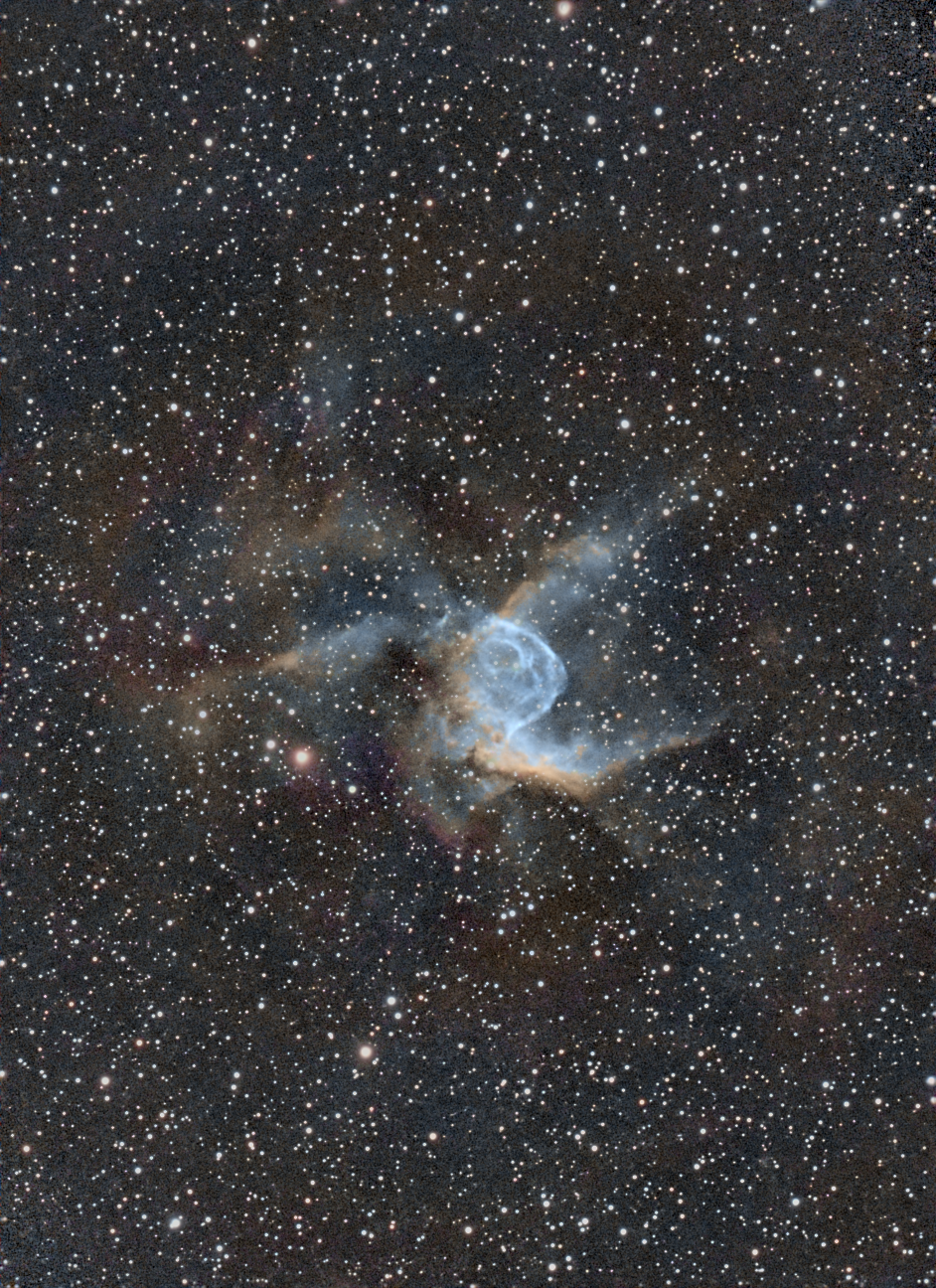2025 March 3
Deep Sky Update – February 2025
Surprisingly February has not been the worst month for observing yet, this winter, at least from Orkney. Though pickings have been slim. Two days of solar observing, two nights out with the Seestar, some success capturing the occultation of Mars with the Seestar, and five consecutive nights of aurora visible, though some of those nights were rather plagued by cloud. The main problem observing with the Seestar is wind – trying to find a spot where it is not being buffeted too much and yet able to see the part of the sky of interest has been challenging. And even then I have been getting a lot of dropped frames.
Smart telescope observing is really taking off – and it is remarkable the results people are getting. If the weather is good at the end of March, I am going to try a Seestar Messier Marathon. Of course I won’t be able to get the low declination targets from up here – but will be interesting to give it a try.
I mentioned before that Peter Morris is taking on the double star advisor role, and I am pleased to include a few words he has written for this months update, including a couple of double star targets. I hope this might encourage a renewed interest in this field.
Section Meeting
It’s less than three weeks to the section meeting in Goostrey on the 22nd March. There are still places available. We will close bookings on the 16th as we will need to advise the numbers to the catering team. All the details and link to the booking system are at: https://britastro.org/event/deep-sky-section-annual-meeting-5
I look forward to seeing many of you there.
Nagler Type 7
There was much excitement around the rumour that Tele Vue would make a big announcement at Astrofest. And it did happen – the first new range of eyepieces from Tele Vue since the Delite range (in 2011(?)) and assuming you don’t include the Apollo 11 special. With 82 degree field width and 19mm eye relief, eyepiece aficionados will be waiting with eager antici–pation for them to become available for purchase in the summer.
Double Star Spot – Peter Morris
I am the new double star advisor for the Deep Sky Section. My mission is to get more amateur astronomers observing double stars, if only for pleasure. Hence, I do not distinguish between optical doubles and binaries. I would be most happy to receive reports of double star observations from BAA members including new measurements of binary stars (and in fact have just received some). I am writing an article about double stars for Popular Astronomy and welcome any opportunity to publish elsewhere. I also hope to set up a project to have a wide range of observers (young, old, male, female, different ethnicities) to send me reports of the colours of the brighter double stars. I have a hypothesis about star colours which I am currently testing against these observations. Meanwhile, please visit my double star database (a work in progress) at https://www.havastro.co.uk/double-star-database.
Two Double Stars to Observe
I have chosen two double stars in Cancer, one is a well-known binary, but the other one is a lesser known optical double. Iota Cancri (STF 1268) is at the top of the constellation on the eastern side. The main star is mag. 4.1 and the secondary is 6.0 and they have a separation of 30.6 arcseconds; the position angle is 308.1⁰. I see the colours as yellow and blue. The other double Phi2 Cancri (STF 1223) is also at the top of the constellation near Chi Cancri. The two stars have the same magnitude (6.2) which has a pleasing effect. The separation is 5.2 arcseconds and the position angle is 218.1⁰. I see them both as yellow-white.
[If you would like to get in touch with Peter or report observations please email doubles@britasro.org Ed.]
Object of Interest for February
February’s target was Thor’s Helmet, NGC 2359, in Canis Major. I was able to see Sirius on a couple of nights in February, which is about at the same declination as the target, but it was just a couple of degrees above the southern horizon, so I did not try for it. However many members were successful.
Jim Latham saw it visually from Anglesey and made this sketch.

Callum Wingrove’s picture featured as BAA Picture of the Week, and other super images were taken by Alan Dowdell, Ivan Walton, Mark Fairfax, Alan Thomas, and this fine image by Paul Whitmarsh using a Seestar S50. We also had a late arrival from Mike Greenhill-Cooper. You can see the images on our section page

Object of Interest for March
Jim’s pick for March is NGC 2936 and NGC 2937 interacting galaxies in Hydra. NGC 2936 is nicknamed the ‘porpoise’ or ‘penguin’ galaxy. The fainter galaxy PGC 1237172 makes a trio known as Arp 142.
Deep Sky Picture of the Month
This month’s POTM is popular for this time of year, the Rosette Nebula NGC 2237. This is a really nice image by Iain Cartwright, a great balance of stars and nebulosity.

And Finally
As spring will soon be upon us, though the Met Office seems to think spring starts on 1st of March! The weather will be warming up, and outdoor work will be a bit more practical for me at least. Hopefully the observatory will be up this year!
Clear, dark skies,
Callum
| The British Astronomical Association supports amateur astronomers around the UK and the rest of the world. Find out more about the BAA or join us. |
